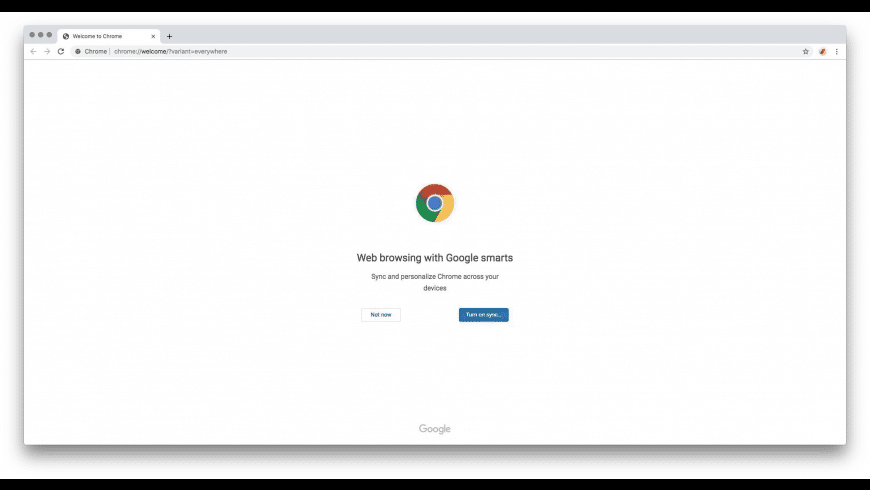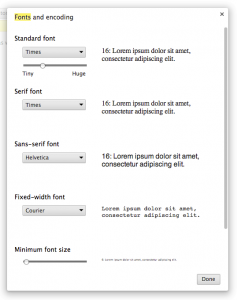- Chrome Os Download For Chromebook
- Chrome Os Is Missing Or Damaged
- Change Default Search Engine Chrome Osx
- Chrome Osx 10.7
- Mac Os Launcher For Chromebook
What are Chromebooks. Chrome OS is the operating system that powers every Chromebook. Do more with apps. Chromebooks have access to a vast library of Google-approved apps. If you're on a Mac using Chrome and you want to view a web page at the same resolution as a smart phone (320px), this is the extension for you! Chrome users on a Mac are unable to shrink the browser window below 400 pixels. This is a constraint on the chromed browser, but not for pop up windows. This extension simply opens the current tab in a.
No email or registration required!
The Chrome operating system (Chrome OS) is an operating system launched by Google that is designed for users who spend a large amount of their time on the Internet using Web applications. It is designed around the key tenets of pace, ease-of-use and security. Chrome OS is surely not as feature-packed as Windows 10, but one can’t deny that it breathes a new life into old machines. In fact, I would go as far as to say that, if you are a general user then you should use Chrome OS over Windows 10 for its amazing performance and battery life. To use Chrome Browser on Mac ®, you'll need: OS X El Capitan 10.11 or later; Linux ® To use Chrome Browser on Linux ®, you'll need: 64-bit Ubuntu 14.04+, Debian 8+, openSUSE 13.3+, or Fedora Linux 24+ An Intel Pentium 4 processor or later that's SSE3 capable; Android ® To use Chrome Browser on Android ®, you'll need: Android Lollipop 5.0.
AnyDesk is the ultimate remote access app your chromebook - giving you a truly mobile solution to remote desktop connectivity and remote control. And it’s free for private use! Enjoy seamless connectivity in any setting, for any application. Establish remote desktop links with your office. Use AnyDesk to administer external support for customers.
Connectivity wherever you are! With AnyDesk, you get unparalleled performance, reliable security, and stable connectivity. Our remote desktop app is easy to set up and use and has all the features you need without being cluttered. Thanks to flexible license models, AnyDesk can be easily customized to your specific workflow.
Read here how to install Android Apps on your Chromebook Agrotron manual.
Peerless Performance from the AnyDesk Remote Desktop Application for Chrome OS

AnyDesk offers high frame-rates, incredibly low latency, and efficient bandwidth usage to your Chrome remote control desktop, thanks to our unique DeskRT codec that lies at the heart of AnyDesk.
By employing the banking-standard TLS 1.2 encryption technology, AnyDesk offers maximum security. RSA 2048 asymmetric key exchange encryption additionally verifies every connection. With AnyDesk On-Premises, you can even use your own network by installing the simple network-appliance on your own server.
Intuitive and stable! The Chrome OS version of the AnyDesk remote desktop app integrates seamlessly with your device. Features are constantly updated.
Our light AnyDesk remote desktop app ensures fast downloads and keeps file sizes small. Download it directly form the Google Play store for increased security!
Be guided through the most important features directly within the app. You’ll be up and running in no time!
By downloading and using AnyDesk, you accept our license agreement and our privacy statement.
Please consider taking our survey to help us make AnyDesk even better!
Read here how to install Android Apps on your Chromebook
Chrome Os Download For Chromebook
Important: Chrome will be removing support for Chrome Apps on all platforms. Chrome browser and the Chrome Web Store will continue to support extensions. Read the announcement and learn more about migrating your app.
Extensions and apps can exchange messages with native applications using an API that is similar to the other message passing APIs. Native applications that support this feature must register a native messaging host that knows how to communicate with the extension. Chrome starts the host in a separate process and communicates with it using standard input and standard output streams.
Native messaging host #

In order to register a native messaging host the application must install a manifest file that defines the native messaging host configuration. Below is an example of the manifest file:
The native messaging host manifest file must be valid JSON and contains the following fields:
| Name | Description |
|---|---|
name | Name of the native messaging host. Clients pass this string to runtime.connectNative or runtime.sendNativeMessage. This name can only contain lowercase alphanumeric characters, underscores and dots. The name cannot start or end with a dot, and a dot cannot be followed by another dot. |
description | Short application description. |
path | Path to the native messaging host binary. On Linux and OSX the path must be absolute. On Windows it can be relative to the directory in which the manifest file is located. The host process is started with the current directory set to the directory that contains the host binary. For example if this parameter is set to C:Applicationnm_host.exe then it will be started with current directory C:Application. |
type | Type of the interface used to communicate with the native messaging host. Currently there is only one possible value for this parameter: stdio. It indicates that Chrome should use stdin and stdout to communicate with the host. |
allowed_origins | List of extensions that should have access to the native messaging host. Wildcards such as chrome-extension://*/* are not allowed. |
Native messaging host location #
The location of the manifest file depends on the platform.
On Windows, the manifest file can be located anywhere in the file system. The application installer must create registry key HKEY_LOCAL_MACHINESOFTWAREGoogleChromeNativeMessagingHosts_com.my_company.my_application_ or HKEY_CURRENT_USERSOFTWAREGoogleChromeNativeMessagingHosts_com.my_company.my_application_, and set default value of that key to the full path to the manifest file. For example, using the following command:

or using the following .reg file:
When Chrome looks for native messaging hosts, first the 32-bit registry is queried, then the 64-bit registry.
On OS X and Linux, the location of the native messaging host's manifest file varies by the browser (Google Chrome or Chromium). The system-wide native messaging hosts are looked up at a fixed location, while the user-level native messaging hosts are looked up in a subdirectory within the user profile directory called NativeMessagingHosts.

- OS X (system-wide)
- Google Chrome:
/Library/Google/Chrome/NativeMessagingHosts/_com.my_company.my_application_.json - Chromium:
/Library/Application Support/Chromium/NativeMessagingHosts/_com.my_company.my_application_.json
- Google Chrome:
- OS X (user-specific, default path)
- Google Chrome:
~/Library/Application Support/Google/Chrome/NativeMessagingHosts/_com.my_company.my_application_.json - Chromium:
~/Library/Application Support/Chromium/NativeMessagingHosts/_com.my_company.my_application_.json
- Google Chrome:
- Linux (system-wide)
- Google Chrome:
/etc/opt/chrome/native-messaging-hosts/_com.my_company.my_application_.json - Chromium:
/etc/chromium/native-messaging-hosts/_com.my_company.my_application_.json
- Google Chrome:
- Linux (user-specific, default path)
- Google Chrome:
~/.config/google-chrome/NativeMessagingHosts/_com.my_company.my_application_.json - Chromium:
~/.config/chromium/NativeMessagingHosts/_com.my_company.my_application_.json
- Google Chrome:
Native messaging protocol #
Chrome starts each native messaging host in a separate process and communicates with it using standard input (stdin) and standard output (stdout). File sw tanaka t21 terbaru. The same format is used to send messages in both directions: each message is serialized using JSON, UTF-8 encoded and is preceded with 32-bit message length in native byte order. The maximum size of a single message from the native messaging host is 1 MB, mainly to protect Chrome from misbehaving native applications. The maximum size of the message sent to the native messaging host is 4 GB.
The first argument to the native messaging host is the origin of the caller, usually chrome-extension://[ID of allowed extension]. This allows native messaging hosts to identify the source of the message when multiple extensions are specified in the allowed_origins key in the native messaging host manifest. Warning: In Windows, in Chrome 54 and earlier, the origin was passed as the second parameter instead of the first parameter.
Chrome Os Is Missing Or Damaged
When a messaging port is created using runtime.connectNative Chrome starts native messaging host process and keeps it running until the port is destroyed. On the other hand, when a message is sent using runtime.sendNativeMessage, without creating a messaging port, Chrome starts a new native messaging host process for each message. In that case the first message generated by the host process is handled as a response to the original request, i.e. Chrome will pass it to the response callback specified when runtime.sendNativeMessage is called. All other messages generated by the native messaging host in that case are ignored.
On Windows, the native messaging host is also passed a command line argument with a handle to the calling chrome native window: --parent-window=<decimal handle value>. This lets the native messaging host create native UI windows that are correctly focused.
Connecting to a native application #
Sending and receiving messages to and from a native application is very similar to cross-extension messaging. The main difference is that runtime.connectNative is used instead of runtime.connect, and runtime.sendNativeMessage is used instead of runtime.sendMessage. These methods can only be used if the 'nativeMessaging' permission is declared in your app's manifest file.

The Following example creates a runtime.Port object that's connected to native messaging host com.my_company.my_application, starts listening for messages from that port and sends one outgoing message:
runtime.sendNativeMessage can be used to send a message to native application without creating a port, e.g.:
Change Default Search Engine Chrome Osx
Debugging native messaging #
When the native messaging host fails to start, writes to stderr or when it violates the communication protocol, output is written to the error log of Chrome. On Linux and OS X, this log can easily be accessed by starting Chrome from the command line and watching its output in the terminal. On Windows, use --enable-logging as explained at How to enable logging.
Here are some errors and tips for solving the issues:
Chrome Osx 10.7
- Failed to start native messaging host.
- Check whether you have sufficient permissions to execute the file.
- Invalid native messaging host name specified.
- Check whether the name contains any invalid characters. Only lowercase alphanumeric characters, underscores and dots are allowed. A name cannot start or end with a dot, and a dot cannot be followed by another dot.
- Native host has exited.
- The pipe to the native messaging host was broken before the message was read by Chrome. This is most likely initiated from your native messaging host.
- Specified native messaging host not found.
- Is the name spelled correctly in the extension and in the manifest file?
- Is the manifest put in the right directory and with the correct name? See native messaging host location for the expected formats.
- Is the manifest file in the correct format? In particular, is the JSON syntax correct and do the values match the definition of a native messaging host manifest?
- Does the file specified in
pathexist? On Windows, paths may be relative, but on OS X and Linux, the paths must be absolute.
- Native messaging host host name is not registered. (Windows-only)
- The native messaging host was not found in the Windows registry. Double-check using
regeditwhether the key was really created and matches the required format as documented at native messaging host location.
- The native messaging host was not found in the Windows registry. Double-check using
- Access to the specified native messaging host is forbidden.
- Is the extension's origin listed in
allowed_origins?
- Is the extension's origin listed in
- Error when communicating with the native messaging host.
- This is a very common error and indicates an incorrect implementation of the communication protocol in the native messaging host.
- Make sure that all output in
stdoutadheres to the native messaging protocol. If you want to print some data for debugging purposes, write tostderr. - Make sure that the 32-bit message length is in the platform's native integer format (little-endian / big-endian).
- The message length must not exceed 1024*1024.
- The message size must be equal to the number of bytes in the message. This may differ from the 'length' of a string, because characters may be represented by multiple bytes.
- Windows-only: Make sure that the program's I/O mode is set to
O_BINARY. By default, the I/O mode isO_TEXT, which corrupts the message format as line breaks (n=0A) are replaced with Windows-style line endings (rn=0D 0A). The I/O mode can be set using__setmode.
- Make sure that all output in
- This is a very common error and indicates an incorrect implementation of the communication protocol in the native messaging host.
Examples #
The examples/api/nativeMessaging directory contains an example application that uses native messaging to communicate with a Python script that serves as a native messaging host. The sample host's directory also contains scripts to install/remove the native messaging host.
Mac Os Launcher For Chromebook
To try out the example, first download and extract the sample app and sample host. Run install_host.bat (Windows) or install_host.sh (Linux / OS X) to install the native messaging host. Then load the app and interact with the app. Run uninstall_host.bat or uninstall_host.sh to unregister the native messaging host when you are done.
